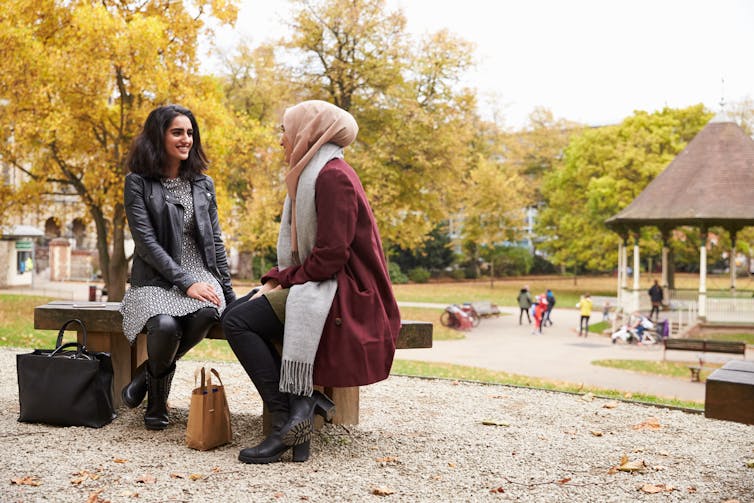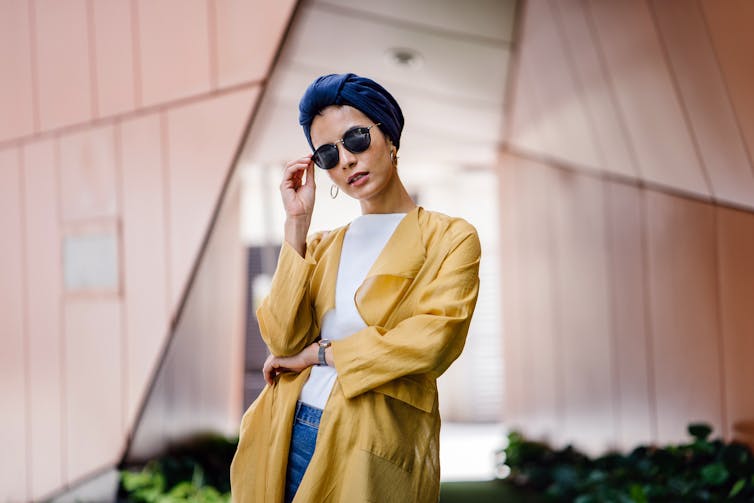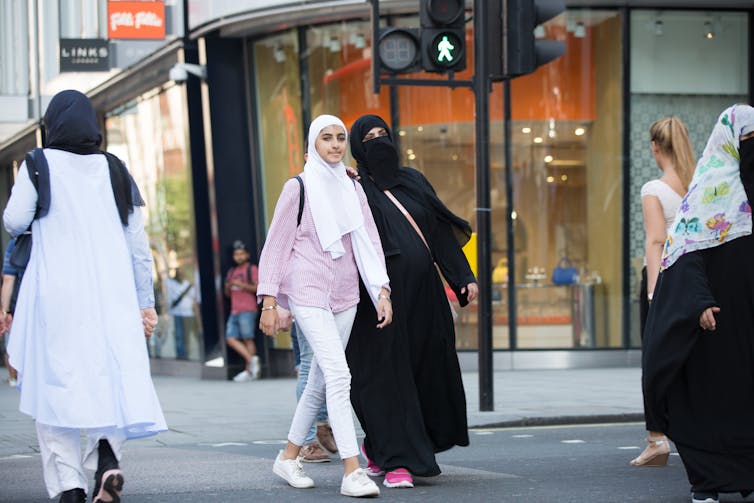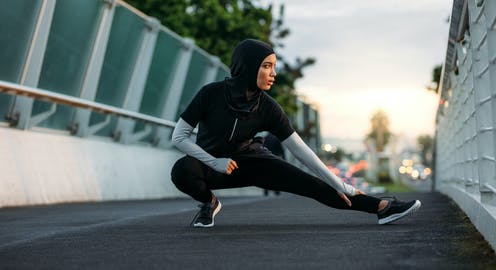In a recent New York Times podcast on the alleged “Trojan Horse” Islamisation of schools in Birmingham, England, a Muslim woman who worked in one of the schools under discussion relays what happened when she started wearing the hijab. She had just got married and non-Muslim colleagues interpreted her head covering as a sign that her new husband was controlling her, that she was oppressed.
In reality, as she explains to the podcasts’ hosts, she had not previously worn the hijab because she was afraid of exactly this: people’s biased reactions to it. She only started to cover when she felt more confident that the school was a safe place where she could be herself without fear of Islamophobic repercussions.
Wearing a form of head covering is the most visible symbol of Islam in the west – and the most misunderstood. The ways in which Muslim women cover are diverse, ranging from the face veil or niqab, to covering their hair and upper body with the headscarf or hijab. And like Muslim women themselves, these come in a huge variety of colours, styles and fashions and are shaped by place, time and trends.
Some people have equated covering with gender inequality and have seen it as a threat to social cohesion or, worse, as synonymous with Islamist extremism. While there are women who are pressured into covering by law or society, assuming that this applies to all who do so feeds these stereotypes, promoting a climate of racism and Islamophobia of which Muslim women, in the UK and worldwide, bear the brunt.
Those who choose to cover have to navigate both these prejudicial views and the legislation, the routine media scrutiny and the political debate they engender – often without being included in any of it – in their everyday lives.
But what these assumptions fail to recognise are the multiple meanings that covering holds for the women who choose to do so. Research shows that for many of those who wear it, the veil is not a passive garment. Rather, it is very often an important and integral part of women’s identity, an expression of personal choice.

Monkey Business Images | Shutterstock
Wearing the headscarf can be liberating
When deciding to cover, quite how a woman negotiates both personal choice and the fear of gendered Islamophobia is not always straightforward. For some women, as our research shows, covering is empowering.
We did a number of individual and focus group interviews with Muslim women who wear the niqab in the UK. One person, Jasmine, told us:
Sisters are forced to wear it in some places in the world. I will not deny this. This is not right. But I choose when to wear it and when to take it off. I choose what colours to wear, not just black and white.
Another, Khadija, said:
It’s awesome! It’s a beautiful, religious fashion statement. I have drawers full of a variety of vibrant colours, materials and prints. I match them with my outfits and wear a different style every day.
For these women, choosing to cover has been a way of demonstrating assertiveness and agency, of being in control of their bodies. In other words, the exact opposite of the passive, oppressed victimhood painted by stereotypical views.

mentatdgt | Shutterstock
Covering can also be complicated
For other women, it can be a more nuanced experience. One French politician told us about how she sought out culturally inconspicuous ways of covering, to prevent being stereotyped as a Muslim woman or face the gendered Islamophobia that often comes with it. She said she finds ways to manage it.
I don’t wear a headscarf. I cover my hair with something, with a hat, with a beret, something culturally French.
Fashion designer and blogger Hana Tajima has talked eloquently on social media about the challenges. In a recent post, she relayed how, on the one hand, there are people who don’t understand why anyone would want to cover in the first place: “They see the headscarf as a way of controlling and manipulating women.” And on the other hand, she said, “there are people who feel like, once you choose to wear the headscarf, you have a responsibility to maintain it.”
She described the pressure of being expected to be the perfect embodiment of someone else’s idea about faith. As for women more broadly, the presumed significance and meaning of their dress is often externally prescribed by society. Still, wearing the headscarf can be a deeply personal choice and a personal expression of faith.
Islamophobic reactions
Research shows that the experiences of Muslim women who wear a covering in the west are part of a broader, intersecting pattern of prejudice, misogyny and racism. Muslim women who cover are stigmatised as threatening, their headscarf or veil the visual embodiment of what makes Muslims “other”.
Ultimately, our research shows that visibly Muslim women face a disproportionate impact of Islamophobia. This ranges from being denied services to being physically attacked in public, including having their headscarves removed against their will on the street.

IR Stone | Shutterstock
Visible Muslimness correlates with directly experiencing Islamophobia. However, we have found that Islamophobia also impacts people who are not Muslim, simply because their physical appearance, their skin colour and even, as research suggests, their names, mean they are deemed to “look” Muslim. Such anti-Muslim racism leads to people being further discriminated against in attempting to secure housing or access education.
![]()
The authors do not work for, consult, own shares in or receive funding from any company or organisation that would benefit from this article, and have disclosed no relevant affiliations beyond their academic appointment.











